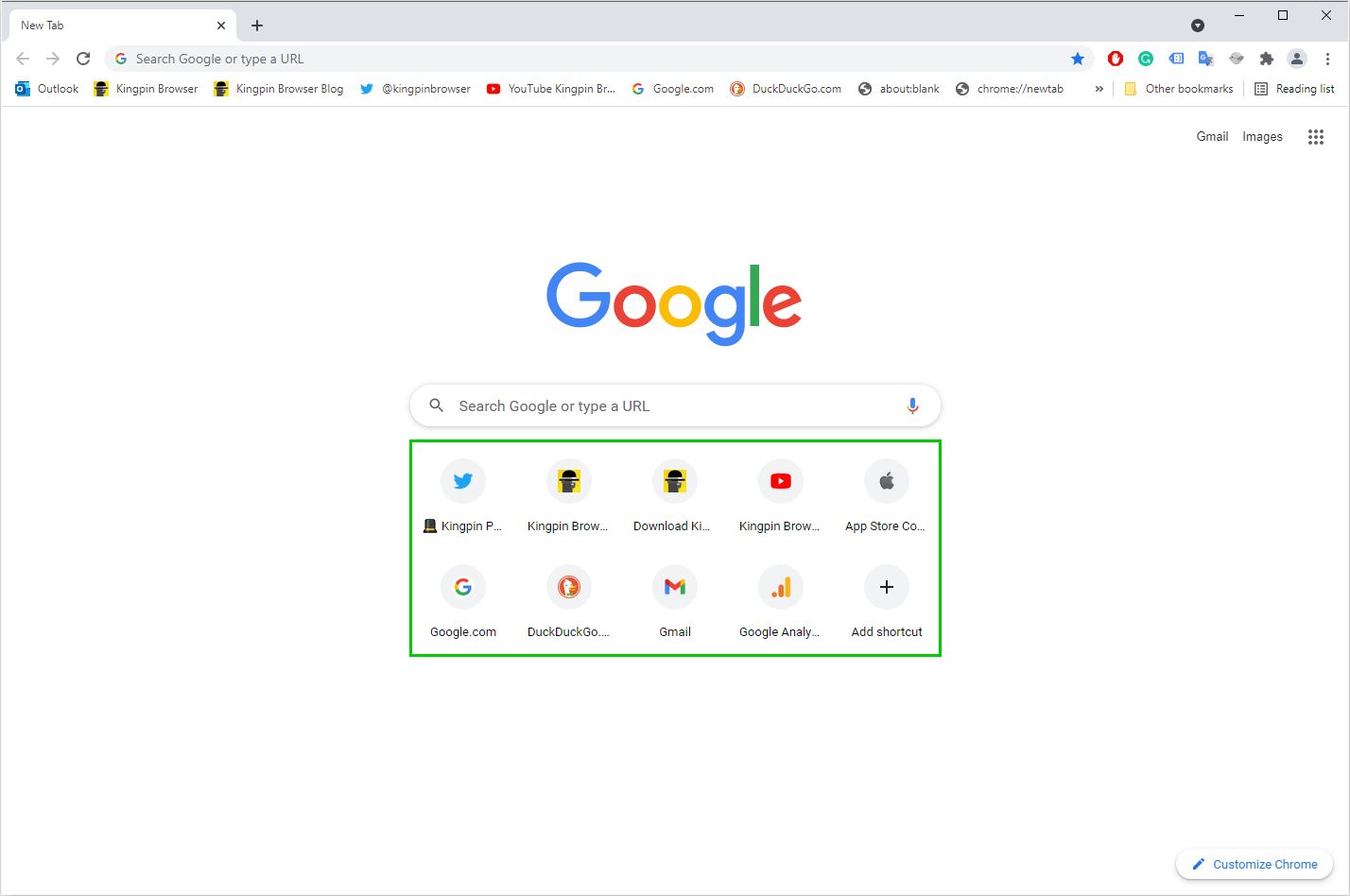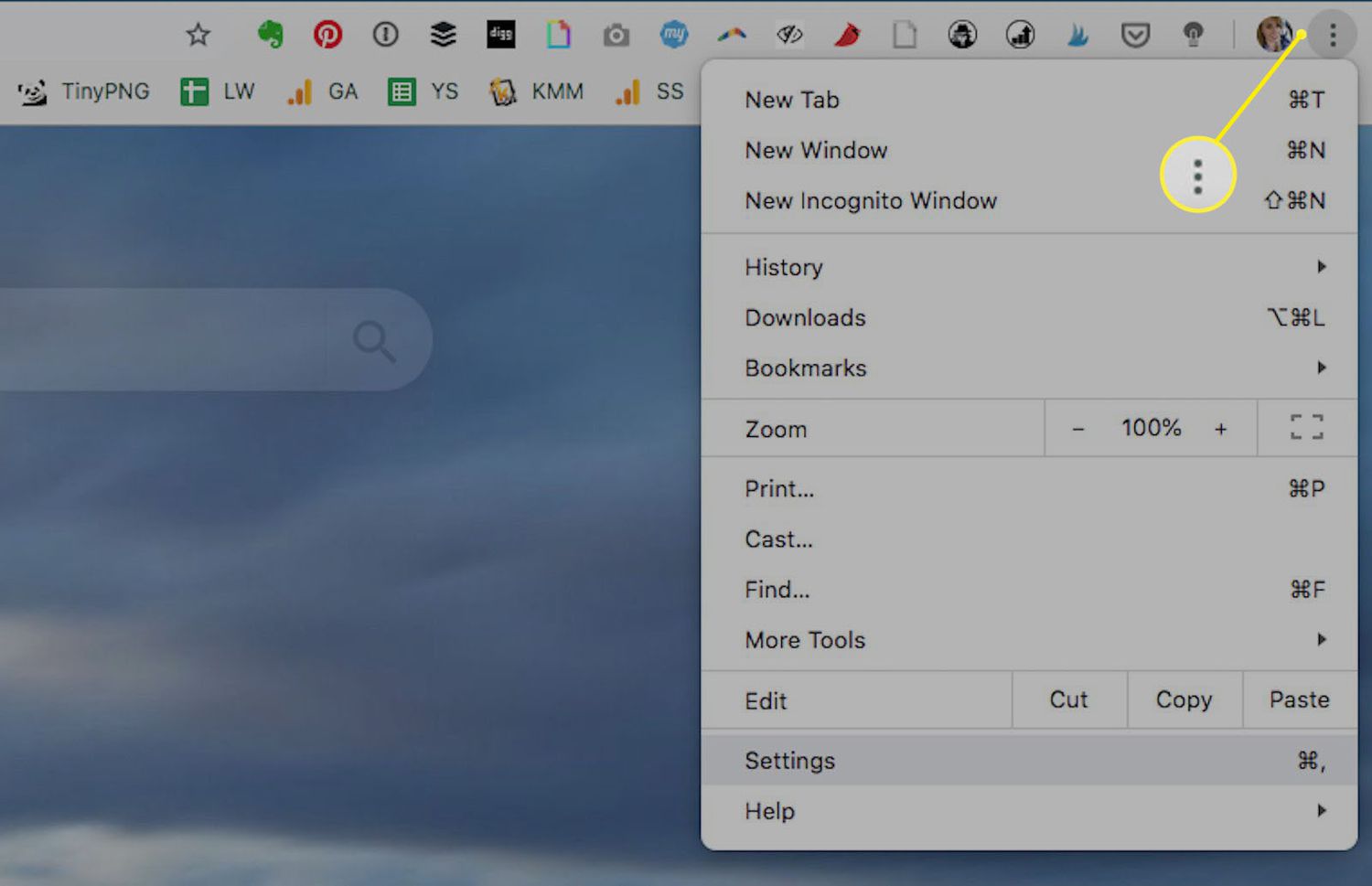Introduction
Google Chrome is one of the most popular web browsers in the world, known for its speed, simplicity, and user-friendly interface. When you open a new tab in Chrome, you are greeted with a grid of website thumbnails, also known as "speed dial" or "most visited" sites. These thumbnails provide quick access to your favorite and frequently visited websites, making it convenient to jump to your desired destination with just a click.
In this article, we will delve into the world of thumbnails in Google Chrome, exploring how they function and how you can customize them to suit your browsing habits. Whether you're a casual internet user or a seasoned web surfer, understanding how to manage and personalize these thumbnails can significantly enhance your browsing experience.
So, if you've ever wondered how to add, remove, or rearrange the thumbnails on your Chrome new tab page, you've come to the right place. We'll walk you through the process step by step, ensuring that you can effortlessly tailor your browsing environment to reflect your preferences and streamline your online activities.
Let's embark on this journey to unlock the full potential of Google Chrome's thumbnail feature, empowering you to curate a personalized and efficient browsing experience. Whether you're looking to boost productivity, stay updated with your favorite websites, or simply add a touch of personalization to your browser, mastering the art of managing thumbnails in Google Chrome will undoubtedly elevate your web browsing endeavors.
Understanding Thumbnails in Google Chrome
When you open a new tab in Google Chrome, you are greeted with a visually appealing grid of website thumbnails. These thumbnails serve as a quick-access portal to your most visited sites, allowing you to seamlessly navigate to your preferred web destinations. Each thumbnail represents a website that you have visited frequently, forming a visual snapshot of your browsing history.
The thumbnails are designed to provide a convenient and efficient way to access your favorite websites without the need to type URLs or search through bookmarks. This feature is particularly beneficial for users who have a set of go-to websites that they visit regularly, such as news sites, social media platforms, or productivity tools.
Google Chrome's thumbnail feature is dynamic and adaptive, meaning that it continuously updates to reflect your browsing behavior. As you visit different websites, the thumbnails on the new tab page adjust to display the sites you frequent the most. This real-time customization ensures that the thumbnails remain relevant to your current browsing patterns, offering a personalized and tailored browsing experience.
Furthermore, the thumbnails in Google Chrome are not static images but rather interactive elements. When you hover over a thumbnail, you may notice additional options, such as the ability to pin the site to the new tab page, remove the thumbnail, or open the site in a new tab. This interactivity adds a layer of functionality to the thumbnails, allowing you to manage and organize your browsing shortcuts with ease.
It's important to note that the thumbnails in Google Chrome are not just limited to displaying individual websites. In some cases, Chrome may group related websites under a single thumbnail, presenting a collection of frequently visited sites within a unified tile. This grouping feature streamlines the new tab page, preventing it from becoming cluttered with an excessive number of individual thumbnails.
In essence, the thumbnails in Google Chrome serve as a visual representation of your browsing habits, offering a convenient way to access your most visited websites while adapting to your evolving interests. Understanding the dynamic nature and interactive capabilities of these thumbnails is crucial for effectively managing and customizing your browsing experience within the Chrome browser.
How to Add Thumbnails on Google Chrome
Adding thumbnails to the new tab page in Google Chrome is a straightforward process that allows you to customize your browsing experience and ensure quick access to your favorite websites. While the thumbnails are primarily based on your browsing history, there are methods to influence which sites appear as thumbnails, enabling you to tailor the new tab page to your preferences.
Method 1: Visit Frequently
The most organic way to add a thumbnail to the new tab page is to visit a website frequently. As you navigate the web and revisit specific sites, Google Chrome automatically updates the thumbnails to reflect your browsing behavior. Therefore, regularly accessing a website will likely result in its thumbnail appearing on the new tab page, providing convenient access with just a click.
Method 2: Pin a Site
If there are websites that you want to ensure appear as thumbnails on the new tab page, you can manually pin them. When you visit a site and hover over its thumbnail, an option to "Pin" the site to the new tab page may appear. Clicking on this option will anchor the site's thumbnail to the new tab page, ensuring that it remains visible even if your browsing behavior changes.
Method 3: Bookmarks Bar
Another indirect method to influence the thumbnails on the new tab page is by organizing your bookmarks. Websites that are added to the bookmarks bar in Google Chrome have a higher chance of appearing as thumbnails on the new tab page. By strategically arranging your bookmarks, you can indirectly control which sites are showcased as thumbnails, providing a level of customization to your browsing environment.
Method 4: Custom Thumbnails Extension
For those seeking a more advanced level of control over their new tab page, utilizing a custom thumbnails extension can be a viable option. These extensions allow you to manually set and customize the thumbnails on the new tab page, giving you the freedom to curate a personalized selection of websites that align with your interests and browsing habits.
By leveraging these methods, you can actively add and influence the thumbnails on the new tab page in Google Chrome, ensuring that your most visited and preferred websites are readily accessible. Whether through organic browsing behavior, manual pinning, strategic bookmark organization, or the use of custom extensions, you have the power to shape your browsing environment to suit your needs and preferences.
Tips for Customizing Thumbnails
Customizing thumbnails on the new tab page in Google Chrome can significantly enhance your browsing experience, allowing you to tailor the visual representation of your most visited websites. By implementing the following tips, you can exert greater control over the thumbnails, ensuring that the new tab page reflects your browsing preferences and provides quick access to the sites that matter most to you.
-
Organize Bookmarks: As mentioned earlier, the arrangement of your bookmarks can influence which websites appear as thumbnails on the new tab page. By organizing your bookmarks into relevant folders and strategically placing them on the bookmarks bar, you can increase the likelihood of specific sites being showcased as thumbnails. This method allows for indirect yet effective customization of the new tab page.
-
Utilize Custom Thumbnails Extensions: Explore the wide range of custom thumbnails extensions available for Google Chrome. These extensions empower you to manually set and customize the thumbnails on the new tab page, offering a high level of personalization. Whether you prefer a minimalist approach with a select few thumbnails or a comprehensive display of your favorite websites, custom thumbnails extensions provide the flexibility to curate the new tab page according to your preferences.
-
Frequent Visits: Continuously visiting your preferred websites is a natural way to ensure their presence as thumbnails on the new tab page. By consistently accessing specific sites, you signal to Google Chrome that these websites hold significance for you, prompting the browser to prominently feature them as thumbnails. This method aligns with the organic adaptation of the new tab page to your browsing behavior.
-
Pin Essential Sites: Take advantage of the option to pin websites to the new tab page. By pinning specific sites, you can guarantee their visibility as thumbnails, regardless of your browsing frequency. This feature is particularly useful for ensuring quick access to essential websites, such as productivity tools, news portals, or educational resources.
-
Refresh Thumbnails: Periodically refreshing the thumbnails on the new tab page can provide a fresh and updated browsing experience. As your browsing habits evolve, it's beneficial to review and adjust the displayed thumbnails to align with your current interests. This can be achieved by unpinning outdated sites and pinning new ones, ensuring that the new tab page remains relevant to your browsing patterns.
By implementing these tips, you can actively customize the thumbnails on the new tab page in Google Chrome, optimizing your browsing environment to align with your preferences and habits. Whether through strategic bookmark organization, the use of custom extensions, or the deliberate selection of pinned sites, you have the ability to shape the new tab page to reflect your unique browsing identity.
Conclusion
In conclusion, the world of thumbnails in Google Chrome offers a dynamic and personalized gateway to your most visited websites, enriching your browsing experience with convenience and efficiency. By understanding the mechanisms behind these thumbnails and mastering the art of customization, you can curate a new tab page that resonates with your browsing habits and preferences.
The process of adding and customizing thumbnails on the new tab page is not only practical but also empowers you to exert greater control over your browsing environment. Whether through organic browsing behavior, manual pinning, strategic bookmark organization, or the utilization of custom extensions, you have the ability to shape the visual representation of your most visited websites.
Furthermore, the interactivity of the thumbnails, such as the option to pin sites and the real-time adaptation to browsing behavior, underscores the user-centric design of Google Chrome. This level of customization aligns with the browser's commitment to providing a tailored and intuitive browsing experience, catering to the diverse needs and preferences of its users.
As you navigate the vast landscape of the internet, the ability to effortlessly access your favorite websites through visually engaging thumbnails can streamline your online activities and enhance productivity. Whether you rely on specific websites for work, stay updated with the latest news, or indulge in your favorite online pastimes, the new tab page serves as a gateway to your digital world.
In essence, the journey of managing thumbnails in Google Chrome is not merely about organizing shortcuts; it's about sculpting a browsing environment that reflects your unique online identity. By leveraging the tips and methods outlined in this article, you can actively shape the new tab page to align with your interests, ensuring that your most visited websites are just a click away.
Ultimately, the world of thumbnails in Google Chrome is a testament to the browser's commitment to user-centric design and personalized browsing experiences. As you continue to explore the boundless expanse of the web, may your customized new tab page serve as a visual compass, guiding you to the digital destinations that matter most to you.

























